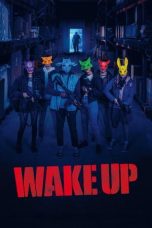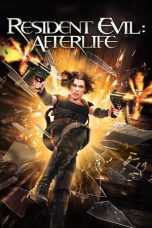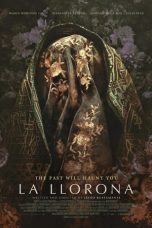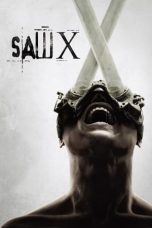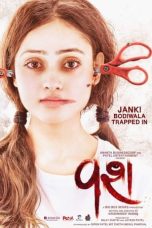- Source: Rat trap
- Source: Rat Trap
A rat trap is a trap designed to catch rats. Designs are often larger variations on mousetraps.
Types of traps
Spring traps for large rodents such as rats or squirrels are powerful enough to break the animal's neck or spine. They may break human fingers as well, whereas an ordinary spring-based mousetrap is very unlikely to break a human finger. Rat spring traps may not be sensitive enough to spring when a mouse takes the bait.
A rat cage trap is a metal cage box-shaped device that is designed primarily to catch rats without killing them. Food bait (not poisoned) is put in the cage trap. When an animal enters the cage and moves toward the bait, the mechanism triggers and closes a door over the entry point. The animal is caught alive and without injury. The animal can be transported and released elsewhere or subsequently killed.
Glue traps are non-poisonous sticky glue spread over card boards and the like and kept in places rats frequent, which gets them stuck to it when they pass over it. The rat will subsequently die from dehydration and asphyxiation. A bait may also be placed on the cardboard to attract the rats.
Another form of non-lethal trap is one where the wires it is constructed of are cut and formed into a funnel shape directed into the body of the cage. This design is usually dome-shaped, with the funnel at the crown. Rats are extremely flexible and can push through the narrower opening into the cage, but cannot escape due to the ends of the wires poking them in the face. The advantage of this design is that it can catch more than one rat at a time.
Other types of traps (as shown below) are designed to kill the animal.
Electronic rat traps detect the presence of a rodent via metal plates on the floor of the trap, then deliver a lethal dose of high-voltage electricity stepped up from batteries to several thousand volts. Some brands offer remote indication to tell you when the trap has operated. The Eliminator (South Africa) and Victor (US) are two brands of electronic rat traps.
Glue traps, however, are not considered a humane method of rodent control, especially if the rodent is left to die. They can also harm non-targeted animals. However, they are still commonly used by professionals for insect monitoring in containers that prevent access by rodents.
Another trap design, often considered more humane, is a self-resetting rat trap like the Goodnature A24. These traps kill rodents with an impact from a CO2-powered piston and are self-resetting.
Gallery
See also
Rat Guard
References
External links
Media related to Rat traps at Wikimedia Commons
Mousetrap Monday - videos of mouse and rat traps being tested.
"Rat Trap" is a song by the Boomtown Rats, released in October 1978 as the third and final single from the band's second album A Tonic for the Troops. It reached No. 1 on the UK Singles Chart for two weeks in November 1978, the first single by a punk or new wave act to do so.
The song was written by Bob Geldof, and produced by Robert John "Mutt" Lange. It replaced "Summer Nights", a hit single for John Travolta and Olivia Newton-John from the soundtrack of Grease, at number one on the UK chart after the latter's seven-week reign.
Song
"Rat Trap" is a rock song, telling the tale of a boy called Billy who feels the depressing town he lives in is a "rat trap".
When the band performed the song on Top of the Pops (which is also mentioned in the song) as the UK new number one, the band members began by tearing up pictures of Travolta and Newton-John to emphasise the fact that the pair - who had spent a total of 16 weeks out of the preceding 22 at the top of the charts - had been deposed. Geldof mimed the saxophone part on a candelabra, a jest he explained in his autobiography Is That It?: "The Musicians' Union had forbidden me to play saxophone on the video, as obviously I hadn't done so on the record. But I saw a candelabra on the piano at the shoot and I put a mouthpiece in the central candle holder and played it. The impact of video came home when during the next few British gigs kids pulled out candelabras from nowhere and began playing them during the sax solo in 'Rat Trap'".
In the music video, which was directed by David Mallet, various members of the band are seen reading copies of the novel Rat Trap by the Welsh author Craig Thomas, although the book has no connection to the song. The lyric about "pus and grime..." was changed to "blood and tears pour down the drains and the sewers", although Geldof mumbled the line anyway.
One of the more popular Boomtown Rats songs, it was performed by them at Live Aid and is still performed by Geldof to this day. During the Live Aid performance, Geldof's microphone went dead (apparently from the cable being damaged), causing Simon Crowe's harmony vocals to become the only audible voice on the last half of the song. This performance was not included on the DVD.
In 1996, Geldof recorded a self-mocking cover version of the song with Dustin the Turkey which reached number one in Ireland.
Personnel
Bob Geldof – vocals
Pete Briquette – bass, vocals
Gerry Cott – guitar
Johnnie Fingers – keyboards, vocals
Simon Crowe – drums, vocals
Garry Roberts – guitar, vocals
Alan Holmes – saxophone
References
Kata Kunci Pencarian:
- Copet
- Irula
- Sabrina Carpenter
- Mr. Bean: The Animated Series
- Mumbai
- Lindsay Lohan
- Frank Sinatra
- Live Aid
- Mouse (seri televisi)
- Ceki
- Rat trap
- Rat Trap
- Rat trap (disambiguation)
- Mousetrap
- The Rat Trap
- Royal & the Serpent
- Brickwork
- Rat-catcher
- Rat Trap (film)
- Doctor Who: The Monthly Adventures
- 1
- 2
Wake Up (2024)
Resident Evil: Afterlife (2010)
La Llorona (2019)
Parallel (2024)
No More Posts Available.
No more pages to load.

